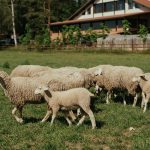When you consider fleece for your outdoor activities, you might wonder about its breathability and moisture-wicking abilities. It's true that fleece offers a unique combination of insulation and airflow, but how does it really perform when you start sweating? Understanding its moisture-wicking properties can make a difference in your comfort level. As you explore the nuances of fleece, you'll find that the fabric's performance varies significantly depending on specific conditions and uses—so what does that mean for your next adventure?
Table of Contents
Key Takeaways
- Fleece offers moderate breathability, allowing some airflow while retaining warmth, making it suitable for colder weather activities.
- It excels in moisture-wicking, pulling sweat away from the skin to promote faster evaporation and reduce discomfort.
- Fleece's structure traps air, providing insulation, but can limit breathability compared to natural fibers like cotton or wool.
- The lightweight nature of fleece enhances its moisture control, making it ideal for high-energy activities.
What Is Fleece?
Fleece is a synthetic fabric made from polyester that's known for its warmth and lightweight feel. You'll find fleece used in various apparel, from jackets to blankets, thanks to its soft texture and insulation properties. It traps air, creating a barrier that keeps you warm, making it an excellent choice for colder weather.
One of the appealing aspects of fleece is its versatility. You can wear it while hiking, lounging at home, or running errands. It's available in different thicknesses, allowing you to choose the right level of warmth for your activities.
Fleece is also easy to care for; it's machine washable and quick-drying, which means you don't have to spend much time maintaining it. Plus, it's lightweight, so you can pack it without adding bulk to your bag.
When considering fleece, think about its durability, too. It resists wear and tear, lasting through multiple seasons. This makes fleece a smart investment for your wardrobe.
Breathability Explained
When you think about breathability, consider how fabric structure affects airflow and moisture control.
It's crucial to understand how these elements work together to keep you comfortable.
Let's break down what makes a fabric truly breathable.
Understanding Fabric Structure
Breathability in fabrics depends on their structure, which affects how well air and moisture can pass through. When you're choosing a breathable fabric, it's essential to consider how the fibers are woven or knitted together. The arrangement of these fibers determines the fabric's overall performance in terms of moisture management and ventilation.
Here are three key aspects of fabric structure that influence breathability:
- Fiber Type: Natural fibers like cotton and wool generally allow more airflow compared to synthetic fibers. However, some modern synthetics are designed for enhanced breathability.
- Weave or Knit: The tighter the weave or knit, the less breathable the fabric typically is. Looser weaves promote better air circulation, while dense constructions can trap heat and moisture.
- Thickness: Thinner fabrics often provide more breathability than thicker materials. When you're active, a lightweight, thin fabric can help keep you cool and dry by allowing moisture to escape quickly.
Understanding these factors can help you select the right fabric for your activities, ensuring comfort and performance when you need it most.
Airflow and Moisture Control
Understanding how airflow and moisture control work together in fabrics can significantly impact your comfort during physical activities. When you're exercising, your body generates heat and sweat. A breathable fabric allows air to circulate while wicking away moisture, helping you maintain a comfortable temperature.
Airflow is essential because it helps dissipate heat. Fabrics designed with breathability in mind typically feature a looser weave or specialized structures that promote ventilation. This means that as you move, fresh air can enter the fabric, keeping you cooler.
Moisture control, on the other hand, refers to the fabric's ability to pull sweat away from your skin. Materials with moisture-wicking properties draw perspiration to the fabric's surface, where it can evaporate more quickly. This process not only keeps you dry but also reduces the chance of feeling chilled, especially in cooler conditions.
When choosing fleece or any fabric for physical activity, look for options that excel in both airflow and moisture control. This combination will ensure you stay comfortable, allowing you to focus on your performance instead of discomfort caused by sweat and heat.
Moisture-Wicking Defined
Moisture-wicking refers to a fabric's ability to pull sweat away from your skin, keeping you dry and comfortable during physical activity. This property is essential for anyone who engages in sports or rigorous outdoor activities, as staying dry can significantly enhance your performance and enjoyment.
Here's how moisture-wicking works:
- Capillary Action: The fabric has tiny fibers that draw moisture away from your skin through a process called capillary action. This means that sweat travels along the fibers and spreads out over the surface of the fabric.
- Evaporation: Once the sweat reaches the surface, it evaporates quickly. This helps regulate your body temperature by allowing heat to escape, preventing overheating during intense workouts.
- Comfort: By keeping moisture away from your skin, moisture-wicking fabrics prevent the discomfort associated with wet clothing, such as chafing and irritation.
When you choose moisture-wicking fabrics, you're investing in comfort and performance. Whether you're running, hiking, or just enjoying a day outdoors, these materials help you stay focused on your activities instead of worrying about sweat.
Fleece Vs. Other Fabrics
When you compare fleece to other fabrics like cotton and wool, you'll notice some key differences in performance.
Fleece often excels in warmth and moisture management, while cotton can feel heavy when wet and wool may be itchier for some.
Understanding these distinctions can help you choose the best fabric for your needs.
Fleece Vs. Cotton
Comparing fleece to cotton reveals key differences in breathability and insulation, making each fabric suitable for different activities and climates. Fleece is designed to trap heat, keeping you warm during cold weather, while cotton tends to absorb moisture, which can leave you feeling chilly and damp in cooler temperatures.
Here are three aspects to consider when choosing between fleece and cotton:
- Moisture Management: Fleece wicks away moisture, allowing sweat to evaporate quickly and keeping you dry. Cotton, on the other hand, absorbs sweat and can become heavy and uncomfortable during physical activities.
- Insulation: Fleece provides better insulation compared to cotton, making it ideal for colder climates. If you're heading out for a winter hike, fleece will keep you warm without adding much bulk.
- Comfort: While both fabrics can be comfortable, fleece is often softer and less prone to wrinkling than cotton. If you prioritize a cozy feel, fleece might be your go-to choice.
Ultimately, your choice will depend on the activity and weather conditions. Consider these factors to make an informed decision that suits your needs.
Fleece Vs. Wool
Fleece and wool each have unique properties that affect their warmth, breathability, and suitability for various activities and weather conditions.
Fleece is synthetic, made from polyester, which means it's lightweight, soft, and quick to dry. If you're engaging in high-energy activities like hiking or running, fleece is a great choice. It wicks moisture away from your skin, keeping you comfortable as you sweat.
On the other hand, wool is a natural fiber known for its insulation and temperature-regulating abilities. It can absorb moisture without feeling wet, making it ideal for colder, damp conditions. If you're looking for something that keeps you warm even when wet, wool is your best bet.
While fleece is often more affordable and easier to care for, wool can be more durable and sustainable in the long run. You'll also find that wool has natural odor resistance, which is a bonus for extended wear.
Ultimately, your choice between fleece and wool should depend on the specific activity and weather conditions you'll encounter. Consider what feels best for you—both fabrics have their distinct advantages!
Performance in Different Conditions
In various weather conditions, fleece performs differently, providing warmth while allowing moisture to escape during activities. You'll find that fleece is versatile, adapting to your needs whether you're hiking, running, or simply enjoying the outdoors.
- Cold Weather: In chilly conditions, fleece traps heat effectively, keeping you warm while still allowing for breathability. It wicks moisture away from your skin, preventing that damp, cold feeling.
- Mild Weather: When temperatures rise, fleece maintains its breathability. It helps regulate your body temperature, so you won't overheat during physical activities. This property makes it a great choice for layering.
- Wet Conditions: While fleece isn't waterproof, it manages moisture well. If you get caught in the rain, it dries quickly and retains warmth better than cotton, ensuring you stay comfortable even when damp.
Understanding how fleece performs in different conditions helps you choose the right gear for your activities. By selecting the appropriate fleece, you'll enjoy optimal comfort and performance, letting you focus on your adventures without worrying about your clothing.
Care and Maintenance Tips
Taking proper care of your fleece can significantly extend its lifespan and maintain its performance.
First, always check the care label before washing. Most fleece can be machine washed in cold water, but avoid using bleach or fabric softeners, as these can damage the fibers. Instead, opt for a gentle detergent.
When drying, skip the high heat of the dryer. Air drying is best to prevent shrinkage and preserve the fleece's shape. If you do use a dryer, choose a low heat setting and remove it while it's still slightly damp to avoid stiffness.
Pilling can occur over time, so gently remove any pills using a fabric shaver or your fingers. Store your fleece in a cool, dry place, and avoid hanging it for long periods, as this can stretch the fabric.
If your fleece gets wet, allow it to air dry thoroughly before storing it. Regularly inspect your fleece for any signs of wear and tear, and repair any small holes promptly to prevent further damage.
Best Uses for Fleece
Understanding how to care for your fleece can enhance your experience when using it for various activities, as it proves to be incredibly versatile in different environments. Whether you're heading out for a hike, running errands, or just lounging at home, fleece can be your go-to fabric.
Here are the best uses for fleece:
- Outdoor Activities: Fleece is perfect for hiking, camping, or skiing. Its warmth and lightweight nature make it an ideal layer for chilly weather.
- Active Wear: If you're into running or working out, fleece can keep you warm without overheating. Its moisture-wicking properties help manage sweat, keeping you comfortable.
- Casual Comfort: Fleece is great for lounging at home or running errands. It offers a cozy feel and is easy to throw on over your everyday clothes.
Frequently Asked Questions
Can Fleece Be Used for Outdoor Activities Year-Round?
Yes, you can definitely use fleece for outdoor activities year-round. Its versatility makes it great for layering in colder months, while lighter options work well in milder weather. Just choose the right thickness for your needs.
How Does Fleece Compare to Wool in Breathability?
When you compare fleece to wool, you'll find fleece isn't as breathable. Wool naturally regulates temperature and moisture, making it better suited for varying conditions. Fleece, however, offers lightweight warmth and quick-drying benefits for casual use.
Is Fleece Suitable for Sensitive Skin?
If you've got sensitive skin, fleece can be a great option. It's generally soft and non-irritating, but you should always check for any specific materials or treatments that might cause discomfort for you.
What Types of Fleece Are Best for Layering?
When layering, opt for lightweight microfleece or grid fleece. These types provide warmth without bulk, allowing you to move freely. They also trap heat effectively, making them ideal for cold weather activities and comfortable wear.
Can Fleece Retain Odors After Prolonged Use?
Yes, fleece can retain odors after prolonged use, especially if it's not washed regularly. To prevent this, you should wash your fleece garments frequently and follow care instructions for optimal freshness and longevity.
- How Does Ring Spun Cotton Affect Garment Fit and Shape Retention? - August 13, 2024
- What Are the Challenges in Producing Ring Spun Cotton? - August 13, 2024
- Is Ring Spun Cotton Suitable for Plus-Size Clothing? - August 13, 2024







